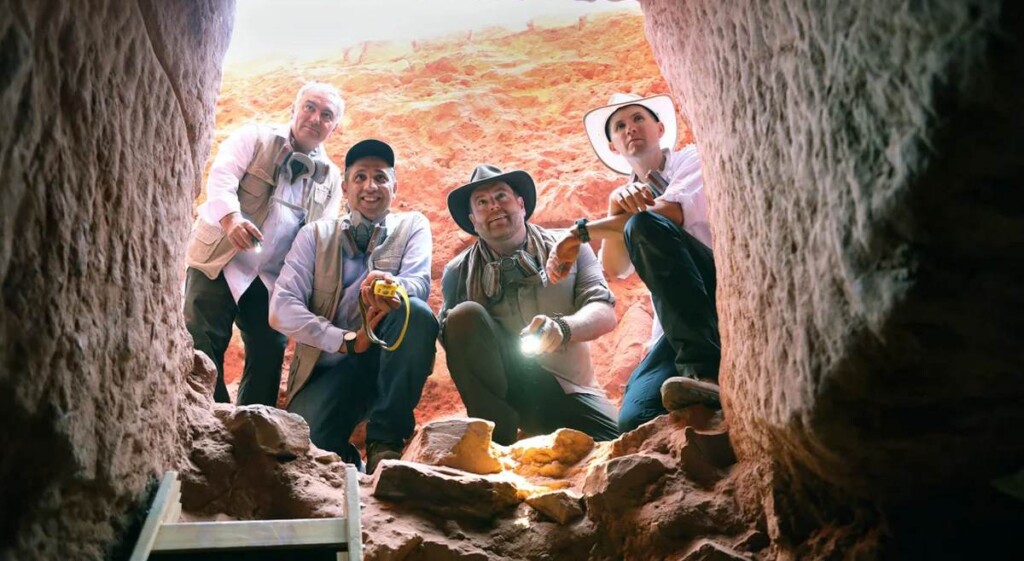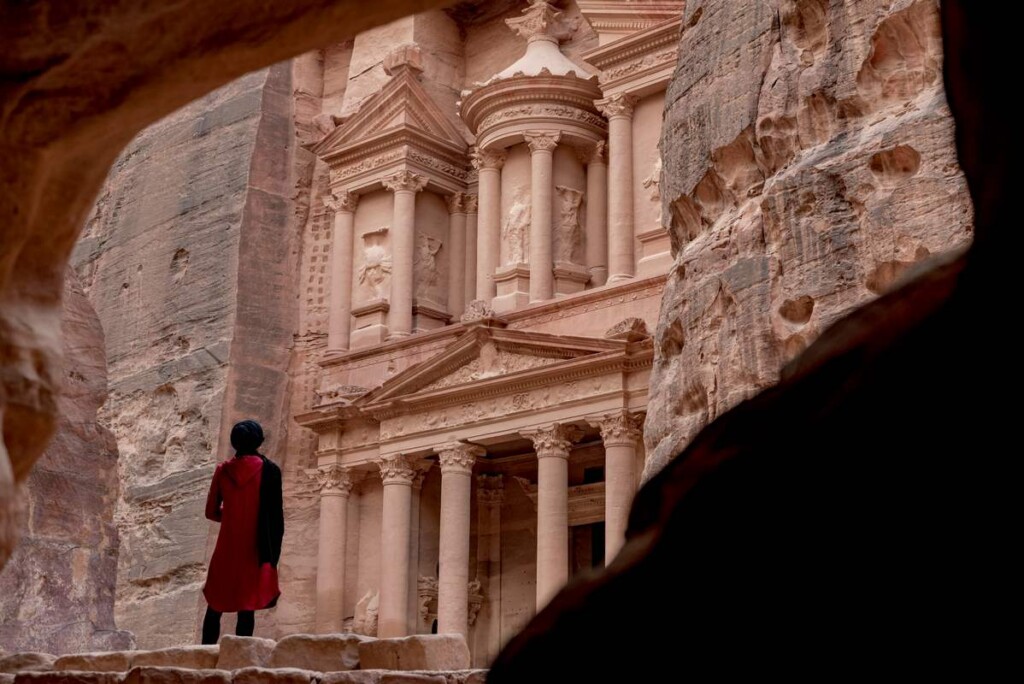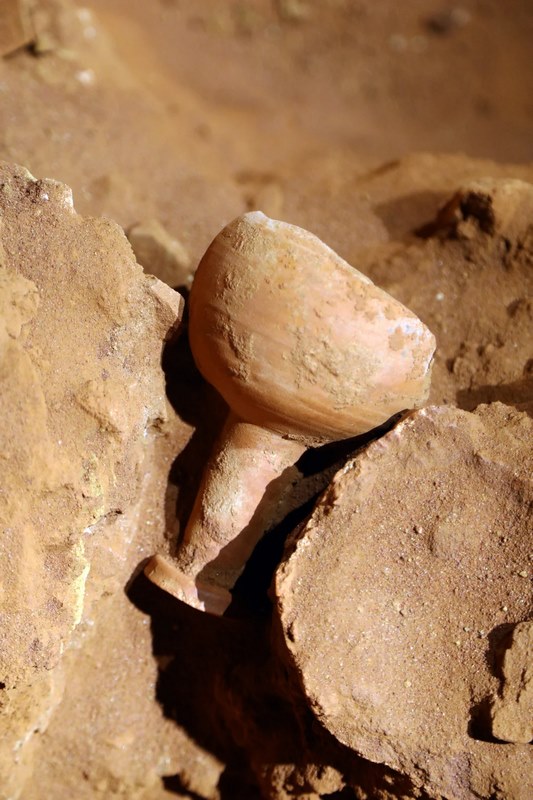 Dr. Fares Braizat (from left), Fadi Balawi, Josh Gates, and Dr. Pearce Paul Creasman look into the newly discovered tomb at Petra – credit, Discovery’s Expedition Unknown.
Dr. Fares Braizat (from left), Fadi Balawi, Josh Gates, and Dr. Pearce Paul Creasman look into the newly discovered tomb at Petra – credit, Discovery’s Expedition Unknown.Even at the foot of one of the most visited ancient monuments on Earth, there are discoveries waiting to be made.
Doubling as the film set for the final act of Indian Jones and the Last Crusade, the Treasury of Petra in Jordan is one of the new Seven Wonders of the World. Despite its fame, an archaeological dig conducted by American and Jordanian researchers uncovered a hidden tomb featuring 12 human skeletons and a variety of grave goods.
The incredible rock-carved city set into the pink sandstone cliffs was made by a nomadic Arabian people called the Nabataeans, of whom little is known. Over the centuries, travelers seeking shelter in Petra and floodwaters permeating the porous sandstone have ruined human remains entombed in the city, preventing archaeologists from learning about them.
The twelve skeletons uncovered are likewise in a delicate condition, but are at least intact, and the excavation team is hoping to gain DNA samples to figure out what they might have looked like, who they were, how old they were when they died, what their diet was like, and so on.
“This is a hugely rare discovery—in the two centuries that Petra has been investigated by archaeologists, nothing like this has been found before,” said Josh Gates, an archaeologist and dramatist who hosts Discovery Channel’s Expedition Unknown, which joined the excavation team.
“Even in front of one of the most famous buildings in the world … there are still huge discoveries to be made.”
(Spoiler alert:) in The Last Crusade, the famous Hollywood action archaeologist played by Harrison Ford follows a trail of Renaissance clues to find the Holy Grail. At the end of the film, venturing inside the treasury building of Petra, he comes upon a large collection of grails, and is quizzed by a ghost as to which one is the real cup that Jesus used at the Last Supper.
In an utterly delightful coincidence, the excavation team found among the grave goods a ceramic goblet that looks for all the world like the grail from the film—a fact not lost on the excavation team, some of whom wore fedora-like sun hats.
“It really was this awesome moment of history imitating art,” Gates told CNN.
 The facade of the Treasury of Petra – Ahmad Qaisieh, Unsplash.
The facade of the Treasury of Petra – Ahmad Qaisieh, Unsplash.Standing right on top of it
When people think of Petra, they mostly picture one building—the most famous one, known as the Khaznah, or Treasury.
Dr. Pearce Paul Creasman, executive director of the American Center of Research, organized the excavation based on work that led him to believe there were chambers concealed underground.
ARCHEOLOGY AT WORK: How a Chatty Motorist Led to One of the Biggest Finds in Greek Archaeology–the Lost 2,800-year-old Temple of Artemis
The theory was based on ground-penetrating radar scans he had performed in the areas to the left and right of the space in front of the Khaznah that detected unnaturally-shaped empty spaces. This was the evidence that when presented to the Jordanian government, helped them secure permission to excavate at the site that sees hundreds of thousands of visitors a year in peacetime.
The artifacts, which included bronze, iron, and ceramic grave goods, were in much better states of preservation than the skeletons, some of which actually had mold on them.
 A ceramic cup, reminiscent of the Holy Grail – credit, Discovery’s Expedition Unknown.
A ceramic cup, reminiscent of the Holy Grail – credit, Discovery’s Expedition Unknown.“We were hopeful to find anything that might tell us more about the ancient people and place—human remains can be a really valuable tool in that regard,” Dr. Creasman told CNN.
Excavating to the right of the Treasury’s facade, the tomb was found more or less in the same place where a tomb had been found years earlier to the left. However, the Jordanian government’s excavation never entered any data on the number of skeletons found in the tomb to the left, leaving gaps in the understanding of the practices of burial at Petra.
MORE FAMOUS MONUMENTS: Mystery of Nazca Lines Deepens as AI Survey Doubles Number of Geoglyphs and Alters Their Meaning
The Nabataeans have been hypothesized as being a more egalitarian society, with kings and nobles living arm in arm with the common folk. This belief has been reflected in the limited knowledge of burial practices at Petra, where scant little clues have been found suggesting which tombs and remains are those of the upper strata of society.
These skeletons are hoped to provide at least a modicum of explanation for this mystery.
SHARE This Incredble, Hollywood Discovery With Your Friends…
Source link

